How to use seaweed in cooking
There is a huge range of flavours within the world of seaweed. Just like vegetables, they require different methods of preparation, and suit different dishes. Here are some of our top tips for seaweed preparation and cooking…
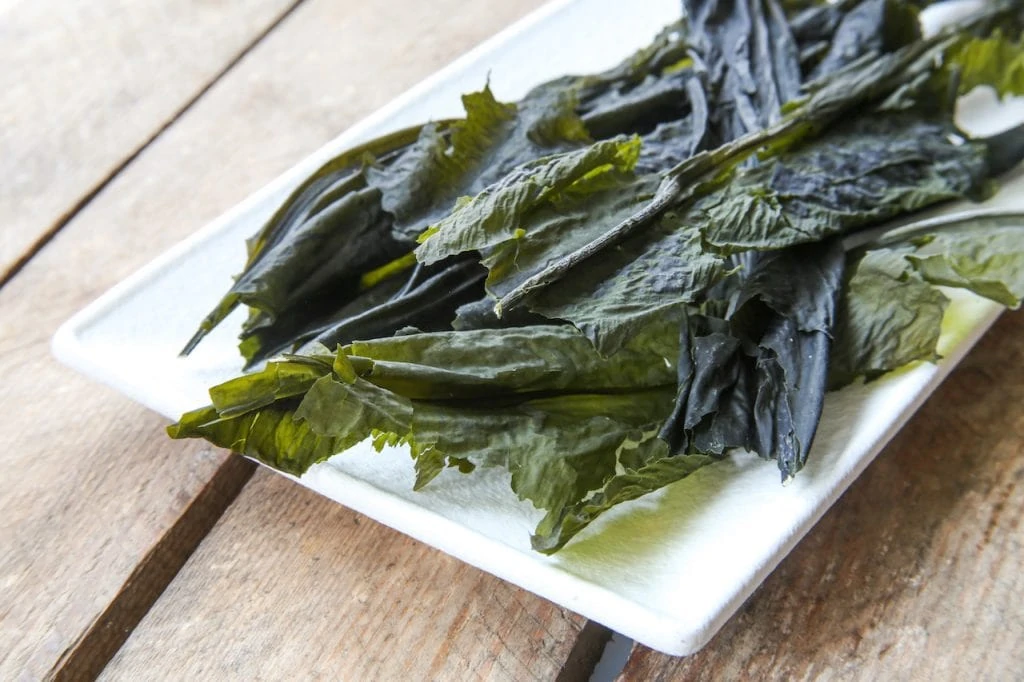
Atlantic Wakame
Alaria esculenta, Winged Kelp, Butare
Overview: Similar to Japanese wakame in texture and flavour. Green and fatty flavour notes with a slight nuttiness. Overall mild flavour which makes it very versatile.
How to use: Simmer the dried kelp in hot water for 3 – 5 minutes. Adding a teaspoon of bicarbonate of soda will help retain the vibrant green colour. When the kelp reaches desired softness, blanch in ice water to stop the cooking process, then wring out excess water.
Cut away the stalks (these are thicker and need extra cooking time, approx 15 min).
Suits ingredients like cucumber, citrus, rice noodles, soy sauce, sesame oil to create a salad.
Roast whole dried wakame at 160C for 4 minutes to get a crispy texture, which you can use as a snack or crumble over a dish.
Wakame acts as a thickening agent. Blend blanched wakame and blanched spinach to create a smooth green purée.
This kelp is commonly used in Japanese miso soup, and can also be used in fish soup to enhance the flavour, nutrition and texture.
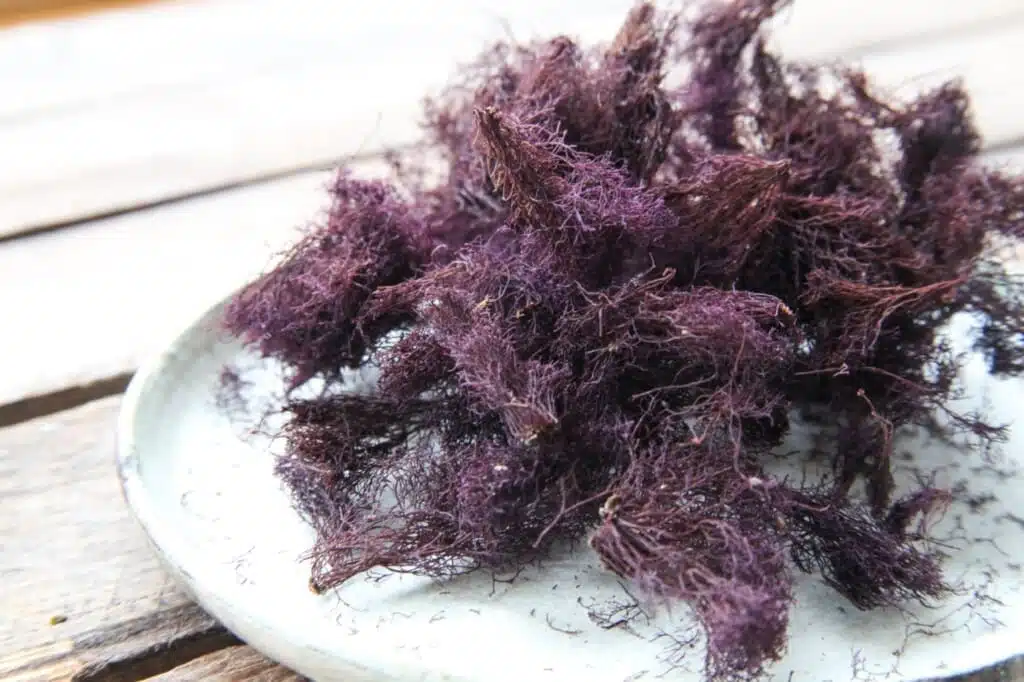
Truffle Seaweed
Vertebrata lanosa, Ocean Truffle, Trøffeltang
Overview: Truffle seaweed has the earthy, garlicky flavour notes of real truffles, combined with a fresh ocean taste. The strong flavour compliments seafood, but also works with vegetables dishes that could otherwise be matched with white truffles, like potatoes, eggs, and pasta.
How to use: Truffle Seaweed’s flavour is enhanced when infused into fats. The flavour is strongest in the first six months, and can be preserved by keeping the bag well sealed.
Finely chop the dried seaweed then add to room temperature butter then whip together for whipped truffle seaweed butter.
Create truffle seaweed oil by combining truffle seaweed with neutral oil, then vacuum seal and cook in a sous vide at 55˚C for 2 hours.
Works well in butter-based sauces like hollandaise. Be careful to incorporate the seaweed at the end of the cooking process, as too-high temperatures can break down the flavour.
Pair with steak and oysters for a unique twist on surf and turf, or stir through pan-fried mushrooms for a rich and complex umami flavour.
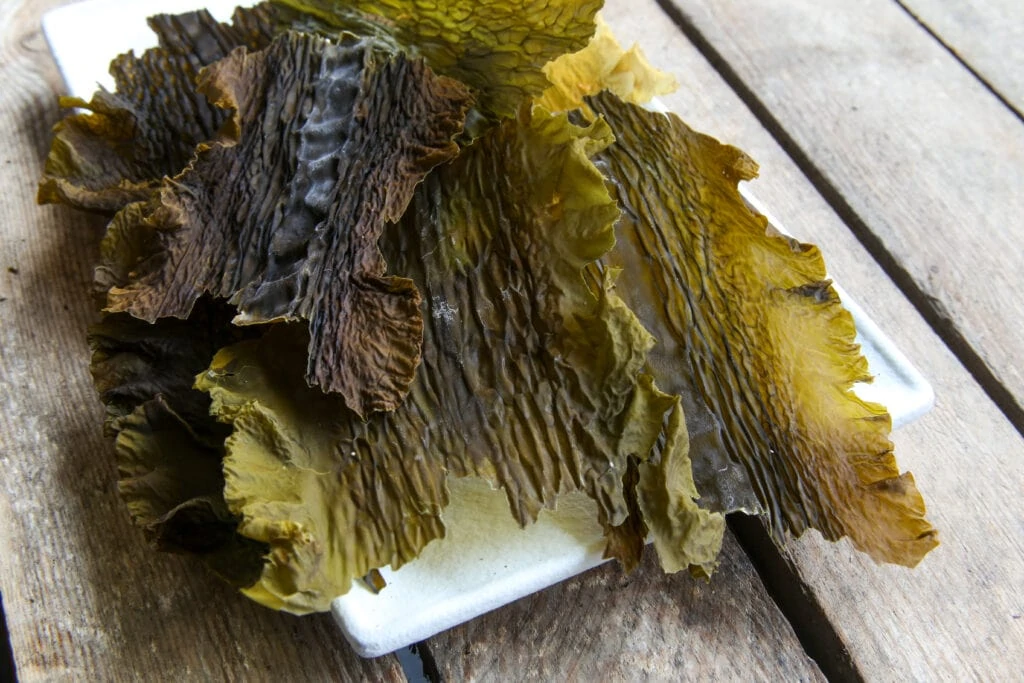
Sweet Kombu
Saccharina latissima, Sugar Kelp, Sukkertare
Overview: Named for its distinctive sweet taste caused by a high concentration of the natural sugar mannitol. Sweet kombu is naturally high in iodine, so we recommend soaking it in water first. Blanching sugar kelp before use can reduce the iodine content by up to 90%.
How to use: Roast whole dried sugar kelp at 160C for 6 minutes to get a crispy seaweed snack. Sugar kelp has flavour notes of liquorice when roasted. You can also the blend dry roasted kelp to a powder for an umami seasoning.
Add a piece of dried kelp to soup, stock, or slow-cooked stews to infuse it with extra umami.
Sugar kelp has thick leaves that are great for steaming. Soak the kelp overnight in cold water then use to wrap fish or meat, then steam to cook and tenderise the protein, whilst also combining the complimentary flavours.
For coleslaw, pickles and ferments (e.g. kimchi and sauerkraut) soak the kelp in cold water overnight. Rinse, then slice finely and combine.
For honey-glazed snacks, blend neutral oil with honey. Brush both sides of the dried kelp with the mixture, then bake at 160˚C for 4 minutes on either side.
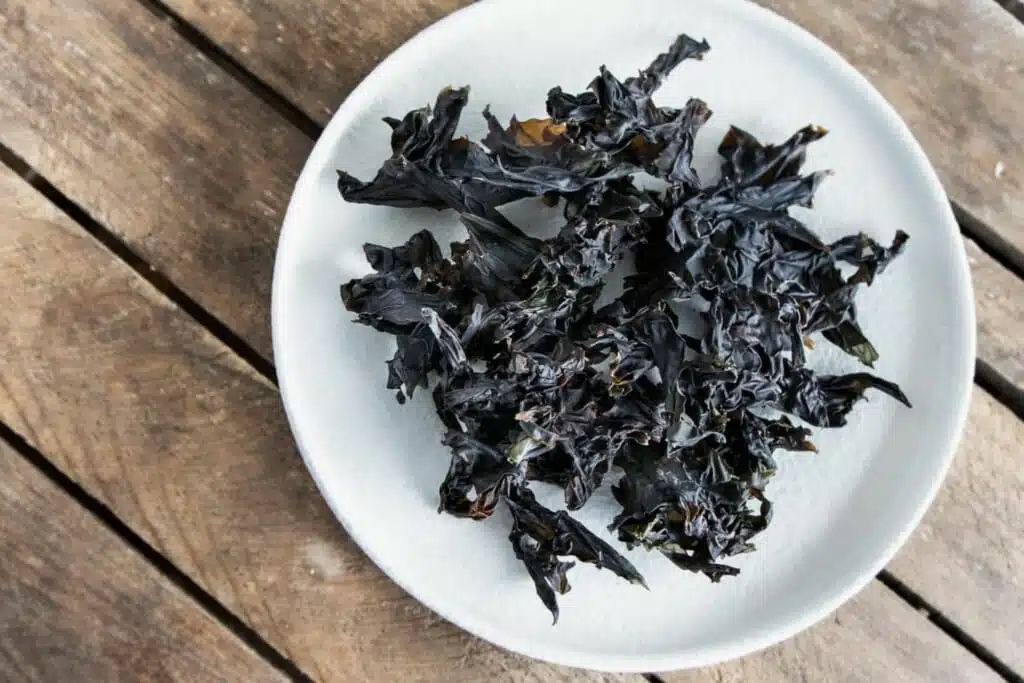
Nori
Porphyra umbilicalis, Laver, Fjærehinne
Overview: Nori has a mild taste, with flavour notes of clams and oysters. It works well with ingredients like soy sauce, sesame oil, ginger, and mirin.
How to use: Deep fry dried nori in oil preheated to 180˚C and for approx. 10 seconds for a crispy texture and and a salty, nutty flavour.
Soak dried nori in hot water for 2 – 4 minutes for a softer consistency, perfect for soups and salads.
Roast in the oven for 10 – 15 minutes at 180˚C then blend into small flakes and use as a seasoning.
Simmer over a low heat for approx 6 hours then strain to produce the Welsh delicacy laverbread – a flavourful gelatinous paste that compliments seafood and potato dishes. Season the water with soy sauce and black vinegar for a more complex flavour. Combine laverbread with oats and butter, then shape into patties and shallow fry for laver cakes (similar to blood pudding, but plant-based).
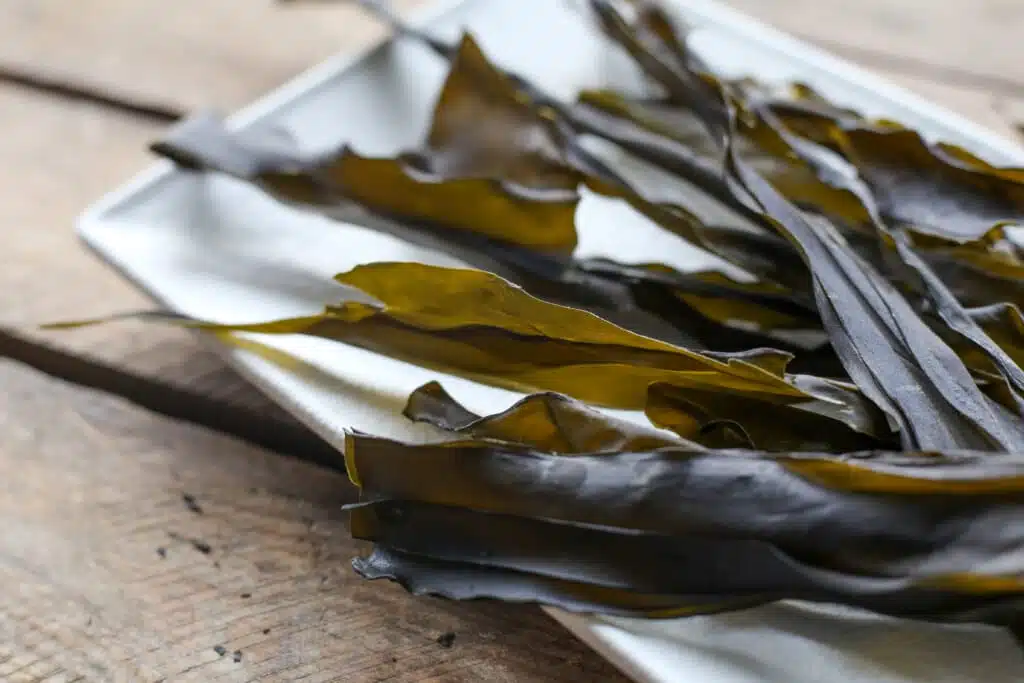
Kombu
Laminara digitata, Oarweed, Fingertare
Overview: With thick leaves and a hearty mineral flavour, kombu makes an excellent base for nutritional savoury broths and soups. Kombu is naturally high in iodine, so we recommend soaking it in water first. Blanching kelp before use can reduce the iodine content by up to 90%.
How to use: Kombu is highly prized in Asian cuisines to make the soup stock dashi. High in umami, it makes a great ‘veggie bone broth’. Gently simmer dried kombu in hot water for 20 minutes (don’t let it boil) then remove the kelp and add dried fish flakes (bonito) to taste.
Kombu’s firm texture makes it a natural choice for fermenting and pickling. Use the leftovers from your dashi to make pickled kombu with ginger and chilli, or green tomato and kombu chutney.
To infuse legumes and pulses with flavour and increased digestibility, add a piece of kombu to the water when soaking/cooking.
Cure fish by wrapping with a piece of rehydrated kombu, tightly wrapping in clingfilm then allowing the natural acids to cure the fish for 2-4 hours, or overnight for a more developed result.
Powdered kombu is a natural thickener, and can be used to stabilise and emulsify sauces, drinks, jellies and ice creams, with no effect on the flavour.
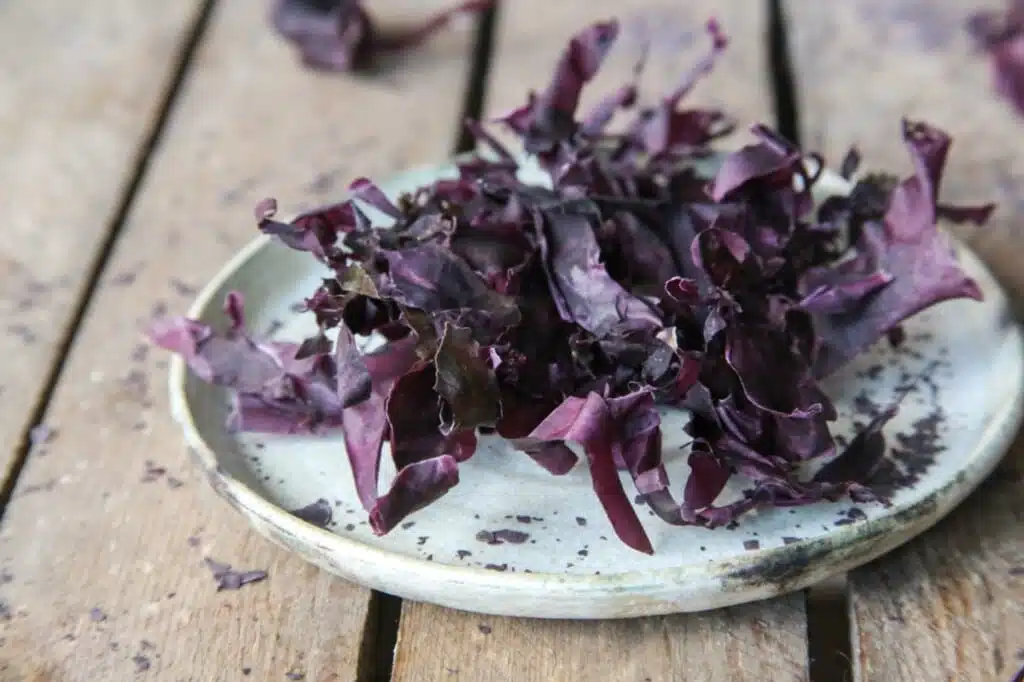
Dulse
Palmaria palmata, Dillisk, Søl
Overview: Delicate savoury notes with a smokiness that gives way to a sweet aftertaste, with hints of liquorice and nuts. Takes on a bacon-like flavour when fried, giving it the nickname ‘ocean bacon’. Vikings used to eat dulse on long voyages to ward off scurvy due to its high concentration of protein and vitamin C.
How to use: Pickled dulse works very well in salads, sandwiches, or as a garnish. Rehydrate the dulse in cold running water for 15 minutes. Heat the pickling liquid and aromats, then remove from the heat, and add the dulse. Wait at least 24 hours before serving.
Roasting dried dulse in the oven at 160C will result in nutty flavours. Careful not to burn – it will be ready after just a few minutes.
Shallow frying will develop more of the smoky notes and bacon-like flavours from which dulse gets its nickname.
Dulse can be added to sauces, burgers, stews, rubs, marinades, and emulsions for extra nutrients and savoury deliciousness.
Powdered dulse infuses very well with dairy products like milk or cream. This can be incorporated into desserts like ice creams and mousse, which leads to interesting flavours with notes of Japanese matcha tea.
Seaweed For Restaurants
Seaweed is packed with organic glutamates – the building blocks of the fifth taste: umami. This is what gives seaweed its natural flavour-enhancing properties. Each type of seaweed has a different flavour profile. Click this button, fill out your details, and we will send you a sample pack!
Request sample packChefs and Collaborators
We love working with chefs and have supplied seaweed to restaurants of all kinds, from local cafes to Michelin starred restaurants and the Bocuse d’Or Chef of the Year competition.
Read about our collaborators.
Food producers
Seaweed is the original flavour-enhancer. Our seaweed is 100% organic and wild-grown in the pristine waters of Lofoten. We supply talented chefs and creative food producers, and would be happy to discuss how seaweed can transform your next project.
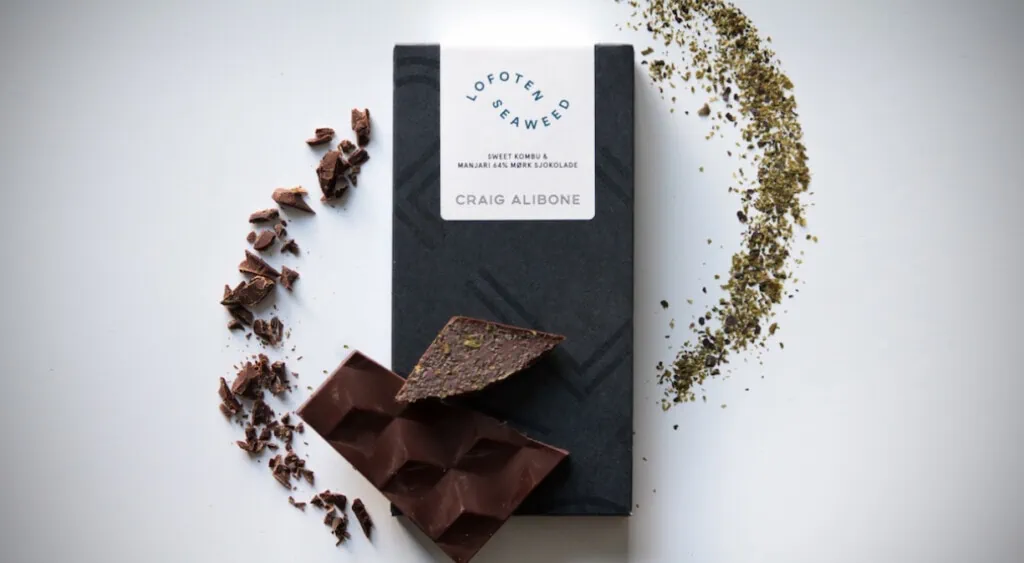
Shipping
Shipping via DHL express or DB Schenker (Ex works) for larger orders. Cost dependent on volume, price list available on enquiry.
Contact
Orders: [email protected]
Enquiries: [email protected]